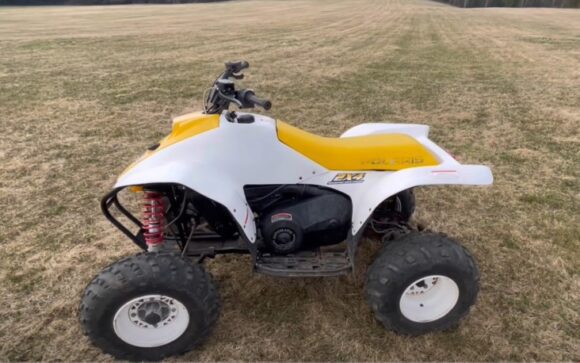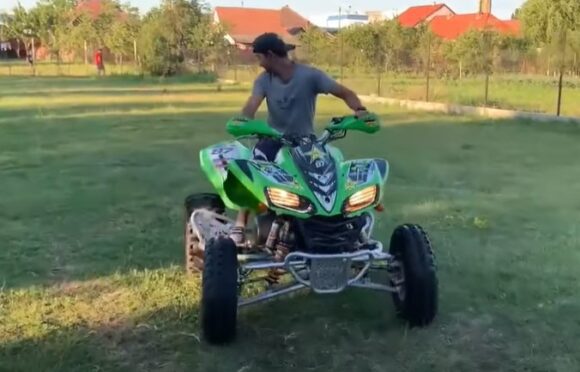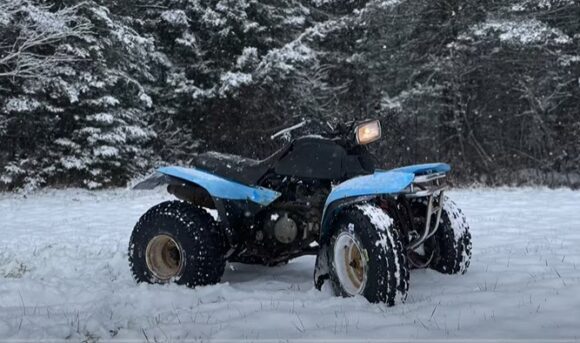Are you a proud owner of a Polaris Trailblazer 250 ATV, but struggling with pesky problems that just won’t seem to go away?
From starting issues, faulty brakes, carburetor problems, clutch issues, and a faulty starter solenoid, dealing with ATV issues can be a real pain in the mud.
But fear not, as this article will dive into the common Polaris Trailblazer 250 problems, and also provide tips and solutions to help you get back to the joy of riding without any headaches.
Therefore, buckle up and get ready to hit the trails with confidence!
| Serial Number | Problems | Solutions |
| 1 | Starting Issue | Replace the faulty spark plug, clean the clogged carburetor, and check the injector. |
| 2 | Brake Problem | Check master cylinder replacement when needed. |
| 3 | Carburetor Problem | Look for faulty components, clean the carburetor |
| 4 | Clutch Problem | Pull the clutches off and thoroughly clean them. |
| 5 | Faulty Starter Solenoid | Check for rust and damage and replace if needed. |
Polaris Trailblazer 250 Problems

The Polaris Trailblazer 250 has been known to have several common problems.
Solutions to these problems are given below including proper maintenance, replacement of faulty parts, and upgrades to improve performance.
1. Starting issue
It is very common to encounter starting issues with your Trailblazer 250.
Many customers have reported similar problems with their Trailblazers, where the ATV ran fine but would not start the next day, despite having fuel and spark.
One customer even tried cleaning the carburetor, installing a new spark plug, and using starting fluid with no success.
A common culprit for starting issues in the Trailblazer 250 is the CDI box, which regulates the electrical current to the engine.
Issues with the carburetor or injector system can also be blamed.
Note: This problem has been prevalent in several model years, including 1997, 2001, and 2006.
The Fix:
If you are experiencing starting issues with your 250 Polaris Trailblazer, one possible solution is to replace the spark plug.
If the CDI box is gone you would have no spark at all.
Even if the old plug looks fine, it can fail under compression. Another option is to add a splash of gas in the carburetor or intake manifold (if fuel injected) to see if the engine fires up.
If you have a fuel-injected engine, it is possible that you have a bad injector control unit or a clogged injector.
Clean the carburetor and remove/replace it when needed.
2. Brake Problems
Many Polaris Trailblazer 250 ATV owners have reported issues with their rear brakes not functioning properly.
Even after replacing the brake pads and bleeding the brake system, the rear brakes may not work as expected.
Some have also experienced difficulty in getting the rear wheels to lock up using the brake pedal. In some cases, the handbrake works better than the foot brake.
While dealers may say this is normal, it can be frustrating for ATV owners who expect better performance from their brakes.
Note: The rear brakes on the 1998, 200, 2001, and 2002 models are notoriously problematic.
The Fix:
The common fixes for rear brake issues with a 250 Polaris ATV are:
- Check the rear master cylinder for proper function and consider replacing it if necessary.
- Bleed the brake lines to ensure proper fluid flow.
- Break in the rear brake by engaging it while riding and releasing it periodically.
- Keep in mind that the rear brake is designed as an emergency brake, and not meant for regular use.
- Make sure the foot pedal is adjusted to provide maximum push.
- Use the handbrake for regular braking, as it controls all four wheels.
Note: It is important to refer to the ATV’s owner’s manual for specific instructions and safety precautions before attempting any repairs or maintenance on the vehicle.
3. Carburetor problem
Common carburetor issues with the Polaris Trailblazer 250 include worn-out needles and seat, which can lead to fuel back-flowing into the air cleaner, and dirty or clogged pilot jets.
Other potential issues could include a dirty or clogged main jet, a damaged float or float valve, or a faulty fuel pump.
If the ATV is difficult to start after sitting for a period of time, it may be due to a clogged or dirty pilot jet, or a malfunctioning fuel pump.
Note: This problem has been prevalent in the 1998, and 2002 model years.
The Fix:
Here are some specific fixes for common carburetor issues on a Trailblazer 250 ATV:
- Check and adjust the choke circuit if necessary.
- Clean the idle circuit and ensure it is flowing properly.
- Adjust the idle mixture screw to the correct setting.
- Install a small inline fuel filter to catch smaller particles that can clog the idle jet or pilot jet. The factory-installed mesh filter on the petcock is not enough to keep the carburetor clean.
Normally, cleaning the carburetor would solve most of the carburetor issues. To properly clean your carburetor, follow this video.
4. Clutch problem
Some common problems with the clutch on the Polaris Trailblazer 250 include the CVT clutch being stuck and not engaging properly, causing the ATV to rev but not go any faster than 10-15 mph.
Additionally, even after replacing the belt, the ATV may still be slipping, making it difficult to climb hills or take off from a dead stop.
Note: The clutch problem is very common with 250 Polaris Trailblazer ATVs, normally the model years 1996, 2000, 2001, and 2003 are plagued with clutch problems.
The Fix:
To fix the clutch problem on your Polaris Trailblazer 250, you can try pulling the clutches off and cleaning them thoroughly.
Debris build-up can cause them to stick and not function properly.
You can also check the primary clutch and make sure it moves freely.
Another tip is to watch the clutches while revving the ATV and ensure that the front clutch starts to squeeze in first and expands before the rear clutch.
You can put a load on it by using the brakes. Lastly, check the motor mounts for any loose or broken parts.
5. Faulty Starter solenoid
Starter solenoid issues are not uncommon with Polaris ATVs.
If your ATV’s electric start is not working and all you hear is a clicking sound when you turn the key, it could be a sign that the starter solenoid is faulty.
One common issue is rust or corrosion on the solenoid, which can cause it to fail. This is often seen in ATVs that have been exposed to water or mud.
Another issue could be that the solenoid is simply worn out and needs to be replaced.
Note: 2003 and 2004 model years of PT 250 are reported to have starter solenoid issues.
The Fix:
To remove the starter solenoid on a Polaris ATV, you may need to remove the recoil start first, depending on the model.
Once you have access to the solenoid, check for any signs of rust, corrosion, or damage. You can use a multimeter to test the solenoid for continuity and ensure that it is functioning properly.
When connecting the battery to the new solenoid, be careful to ensure that all grounds are properly connected and there are no loose wires.
Frequently Asked Questions (FAQs)
Is a Polaris Trailblazer 250 a 2-stroke or 4-stroke?
The Polaris Trailblazer 250 is a 2-stroke ATV.
How much horsepower does a Trailblazer 250 have?
Polaris Trailblazer 250 engine is rated at 22 horsepower.
When was Polaris Trailblazer 250 launched?
Polaris Trailblazer 250 was launched in 1990 (to 2006).
What type of transmission does the Polaris Trailblazer 250 have?
The Polaris Trailblazer 250 has a continuously variable transmission (CVT) with forward, neutral, and reverse gears.


